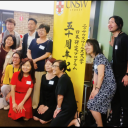第xx回「おせち料理」って何?
What is Osechi Ryōri?
日本人には常識でも、文化の違うオージーにはイマイチ伝えづらい…。
そんな時にぴったりの表現や話の流れをご紹介。
(文:池田俊一 オーストラリア国立大学アジア・太平洋カレッジ日本センター 協力:池田澪奈)
エピソード
友人が『今年はおせち料理をネットで注文する』と言っていたけれど、これってどういう意味?
AussieWhat is おせち料理 (osechi ryōri)?
YouAh, yes, this would be a foreign concept for you. おせち料理 is a two-part word comprised of “おせち” (osechi), which originally referred to a season or significant period, and “料理” (ryōri), which means food or dish.
AussieRight, so it’s kind of like a special seasonal feast?
YouYes, and it’s arguably the most important meal of the year, too. おせち料理 is eaten nationwide on New Year’s Day to wish for happiness, good luck and prosperity for the year ahead.
AussieSounds very important. So, what is actually in these おせち料理?
YouBefore I go into more detail about the dishes, let me touch on a defining aspect of おせち料理, which is their easily recognisable lacquer boxes that they are packed in, called 重箱 (jūbako). They somewhat resemble bentō boxes, except that t hey are often stacked on top of one another. Then, inside these multi-tiered 重箱, there lies an assortment of colourful dishes, with each dish serving as a symbol or wish for the coming year. For example, there is 黒豆 (kuromame), which are black soy beans seasoned with sugar and a tiny bit of soy sauce.
AussieWhat does the 黒豆 represent?
YouWell, in Japanese, the word for bean (豆 “mame”) also sounds like the word for ‘hard work and good health’, so therefore, it’s in the line-up.
AussieHahaha, that’s awesome!
YouAnother example is the エビ (ebi), which are prawns cooked with sake and soy sauce. This one symbolises longevity, due to their ‘long beard and bent waist’!
AussieWow, I never would have expected that connotation.
YouYes, some are a bit obscure, but each and every one of the dishes holds some kind of special meaning.
説明する時のポイント
「おせち料理」の「おせち」は漢字で「御節」と書かれ、節会(せちえ)や節句(せっく)の際に作られる料理のことだと説明しよう。多くの節日(せつじつ)のうち最も重要なのが正月ということから、正月に食べる料理を「おせち料理」または単に「おせち」と言うようになった、とも教えてあげよう。「御節料理」の1つひとつに、その年の家族の健康、幸せなどを願う語呂合わせの由来(例えば「黒豆」は「まめに(達者で)働けるように」、「昆布巻き」は「よろこんぶ – 喜ぶ」、「鯛」は「めでたい」というように)があるということも伝えておきたい。現在のように重箱に詰めるようになったのは、明治時代以降で、特に1950年代からデパートなどが販売するようになって全国的に広まったことも添えておこう。
【単語・成句】
foreign concept なじみのないこと
comprised of ~ ~からできている
season or significant period 節句/行事
feast ご馳走
arguably 恐らく
prosperity 繁栄
touch on 触れる
easily recognisable すぐに見分けがつく
lacquer box 漆塗りの箱型の食器
multi-tiered 2つ以上重ねられた
assortment of ~ 何種類もの~
in the line-up 好例に挙げられる
symbolise longevity 長寿を象徴する
【会話文で使える表現】
“That’s awesome”という表現は、相手の言ったことに対して「それはすごいね」「すばらしい」「そりゃ、いいね」と褒めたり、感心したりした時に使われる。
【例1】“Hey, I got 95 out of 100 in the last test!” “Wow, that’s awesome!!”
「おい、この間のテストで95点取ったよ!」「へぇ、そりゃすごい!」
【例2】“I’m going to Japan for 3 weeks during the summer holidays.” “Oh, that’s awesome. Hope you enjoy your time over there.”
「今度の夏休みに3週間、日本に行くんだ」「わぁ、それはいいね。楽しんできてね」
【例3】“I have a new year’s resolution already setout, and that’s to make sure I exercise on a daily basis.” “That’s awesome. I’ve been thinking of joining a gym, too, because I would love to get more fit.”
「新年の誓いはもう決めてあって、毎日運動をすることにした」「それはいいね。僕も、もっと健康な体作りのために、ジムに通い始めようかと考えているんだ」











